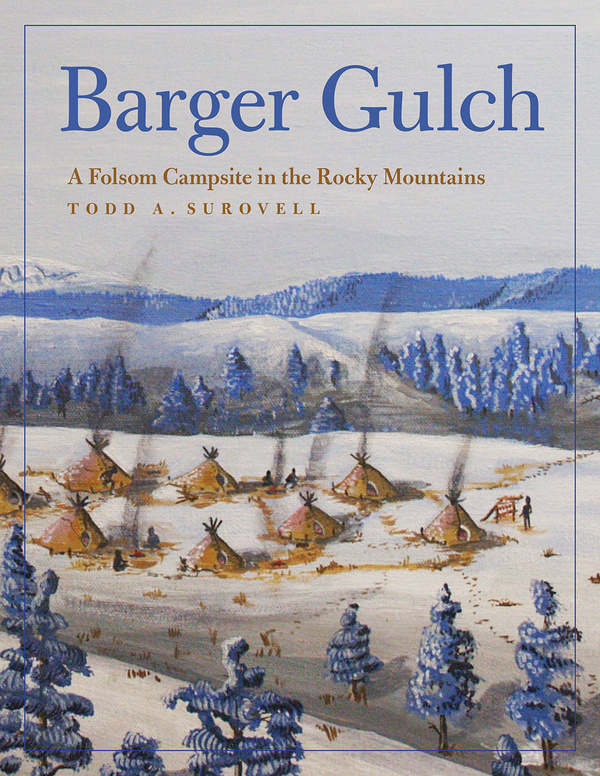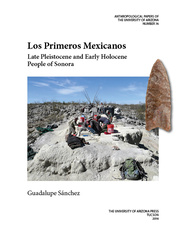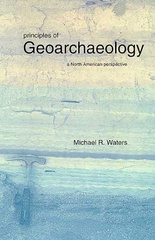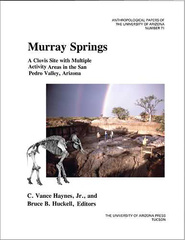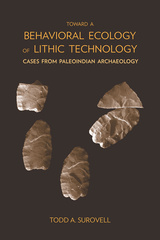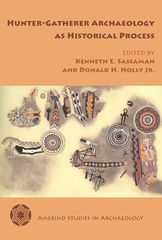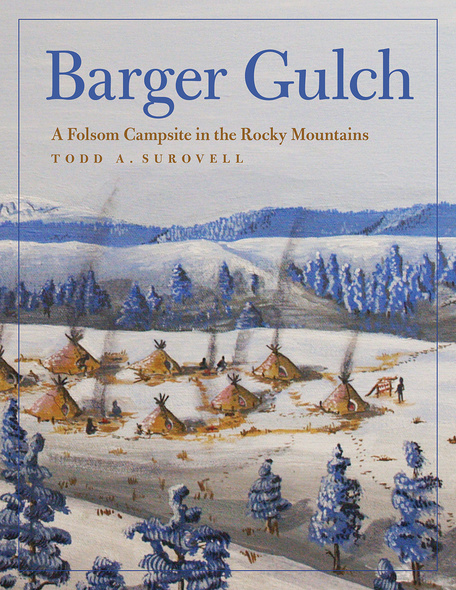
256 pages, 8 1/2 x 11
93 b&w illustrations, 13 color illustrations,
Hardcover
Release Date:22 Mar 2022
ISBN:9780816545551
Barger Gulch
A Folsom Campsite in the Rocky Mountains
The University of Arizona Press
At the end of the last Ice Age in a valley bottom in the Rocky Mountains, a group of bison hunters overwintered. Through the analysis of more than 75,000 pieces of chipped stone, archaeologist Todd A. Surovell is able to provide one of the most detailed looks yet at the lifeways of hunter-gatherers from 12,800 years ago.
The best archaeological sites are those that present problems and inspire research, writes Surovell. From the start, the Folsom site called Barger Gulch Locality B was one of those sites; it was a problem-rich environment. Many Folsom sites are sparse scatters of stone and bone, a reflection of a mobile lifestyle that leaves little archaeological materials. The people at Barger Gulch left behind tens of thousands of pieces of chipped stone; they appeared to have spent quite a bit of time there in comparison to other places they inhabited.
Summarizing findings from nine seasons of excavations, Surovell explains that the site represents a congregation of mobile hunter-gatherers who spent winter along Barger Gulch, a tributary of the Colorado River. Surovell uses spatial patterns in chipped stone to infer the locations of hearths and house features. He examines the organization of household interiors and discusses differential use of interior and exterior spaces. Data allow inference about the people who lived at the site, including aspects of the identity of flintknappers and household versus group mobility. The site shows evidence of a Paleoindian camp circle, child flintknapping, household production of weaponry, and the fission/fusion dynamics of group composition that is typical of nomadic peoples.
Barger Gulch provides key findings on Paleoindian technological variation and spatial and social organization.
The best archaeological sites are those that present problems and inspire research, writes Surovell. From the start, the Folsom site called Barger Gulch Locality B was one of those sites; it was a problem-rich environment. Many Folsom sites are sparse scatters of stone and bone, a reflection of a mobile lifestyle that leaves little archaeological materials. The people at Barger Gulch left behind tens of thousands of pieces of chipped stone; they appeared to have spent quite a bit of time there in comparison to other places they inhabited.
Summarizing findings from nine seasons of excavations, Surovell explains that the site represents a congregation of mobile hunter-gatherers who spent winter along Barger Gulch, a tributary of the Colorado River. Surovell uses spatial patterns in chipped stone to infer the locations of hearths and house features. He examines the organization of household interiors and discusses differential use of interior and exterior spaces. Data allow inference about the people who lived at the site, including aspects of the identity of flintknappers and household versus group mobility. The site shows evidence of a Paleoindian camp circle, child flintknapping, household production of weaponry, and the fission/fusion dynamics of group composition that is typical of nomadic peoples.
Barger Gulch provides key findings on Paleoindian technological variation and spatial and social organization.
Surovell’s book is a tour de force in building an argument for identifying site structure from presumably simple scatters of Folsom-age stone flakes and tools. This detailed study showcases methods for extracting spatial patterning from such remains, revealing hearths and homes and glimpses of how ancient Native Americans used these spaces and of the types of activities undertaken at their winter campsite over 12,800 years ago. This is a must-own volume on hunter-gatherer site structure and Paleoindian technological organization and will likely generate similar studies for years to come.’—Jason M. LaBelle, co-editor of The Lithic Caches of Colorado
‘This work provides a novel analytical framework for identifying residential structures using the spatial patterning of artifacts. Since all humans build shelters of some sort, these methods will be useful for all archaeologists.’—Brian Andrews, co-author of The Mountaineer Site: A Folsom Winter Camp in the Rockies
Todd A. Surovell is an archaeologist and a professor of anthropology at the University of Wyoming. He has worked primarily in the Rocky Mountain West and specializes in Paleoindian archaeology, lithic technology, geoarchaeology, Pleistocene extinctions, and ethnoarchaeology.

